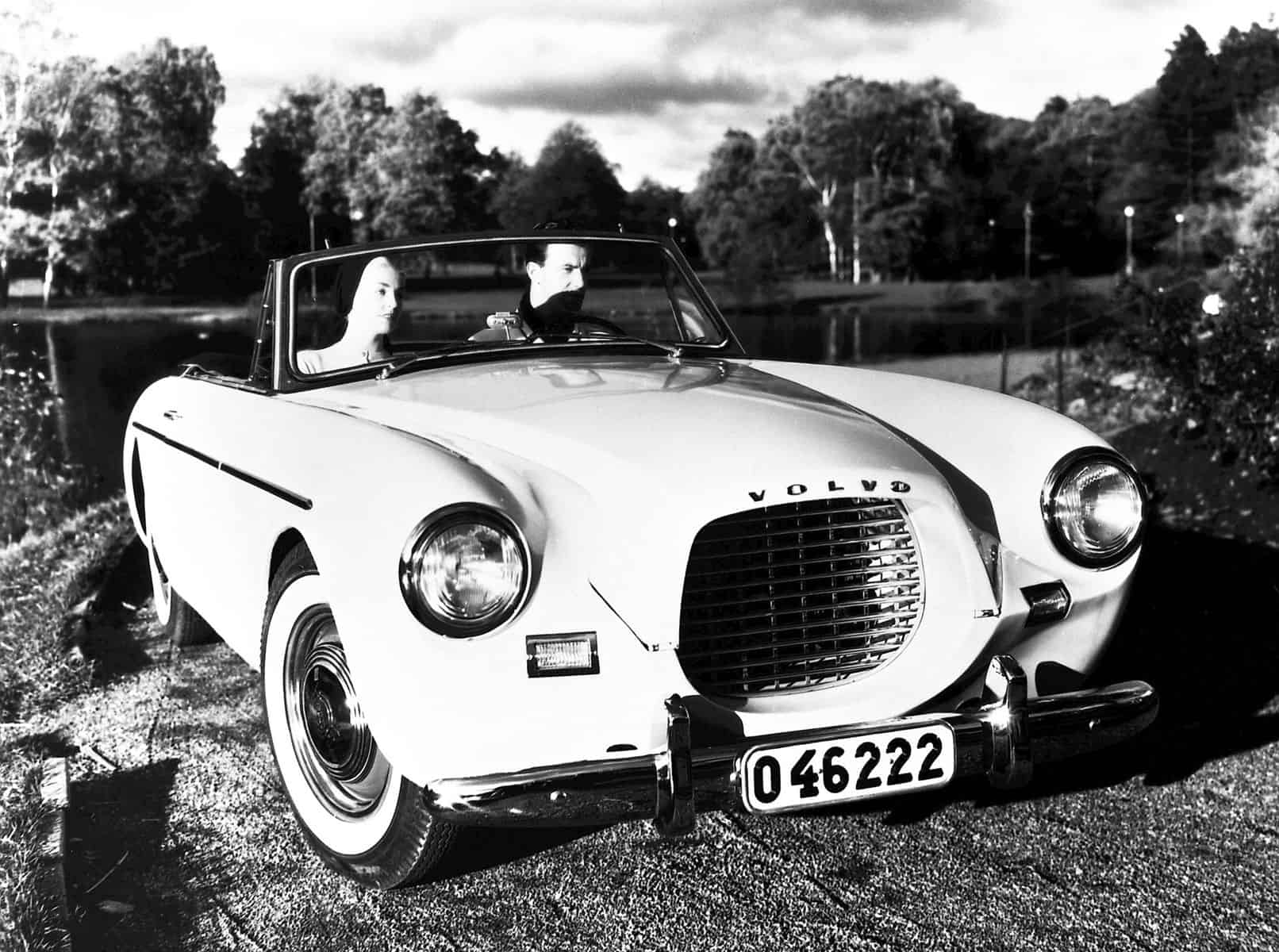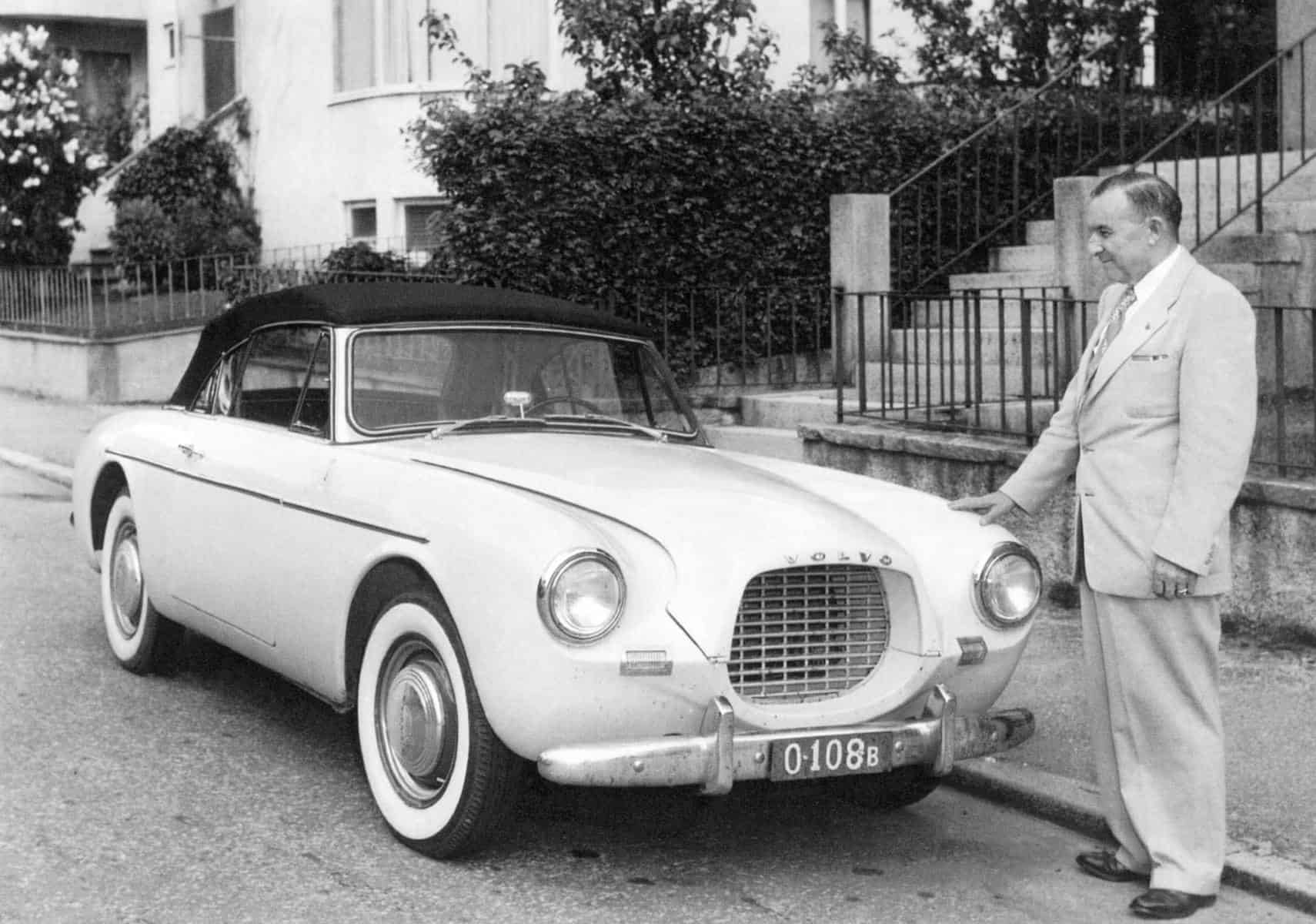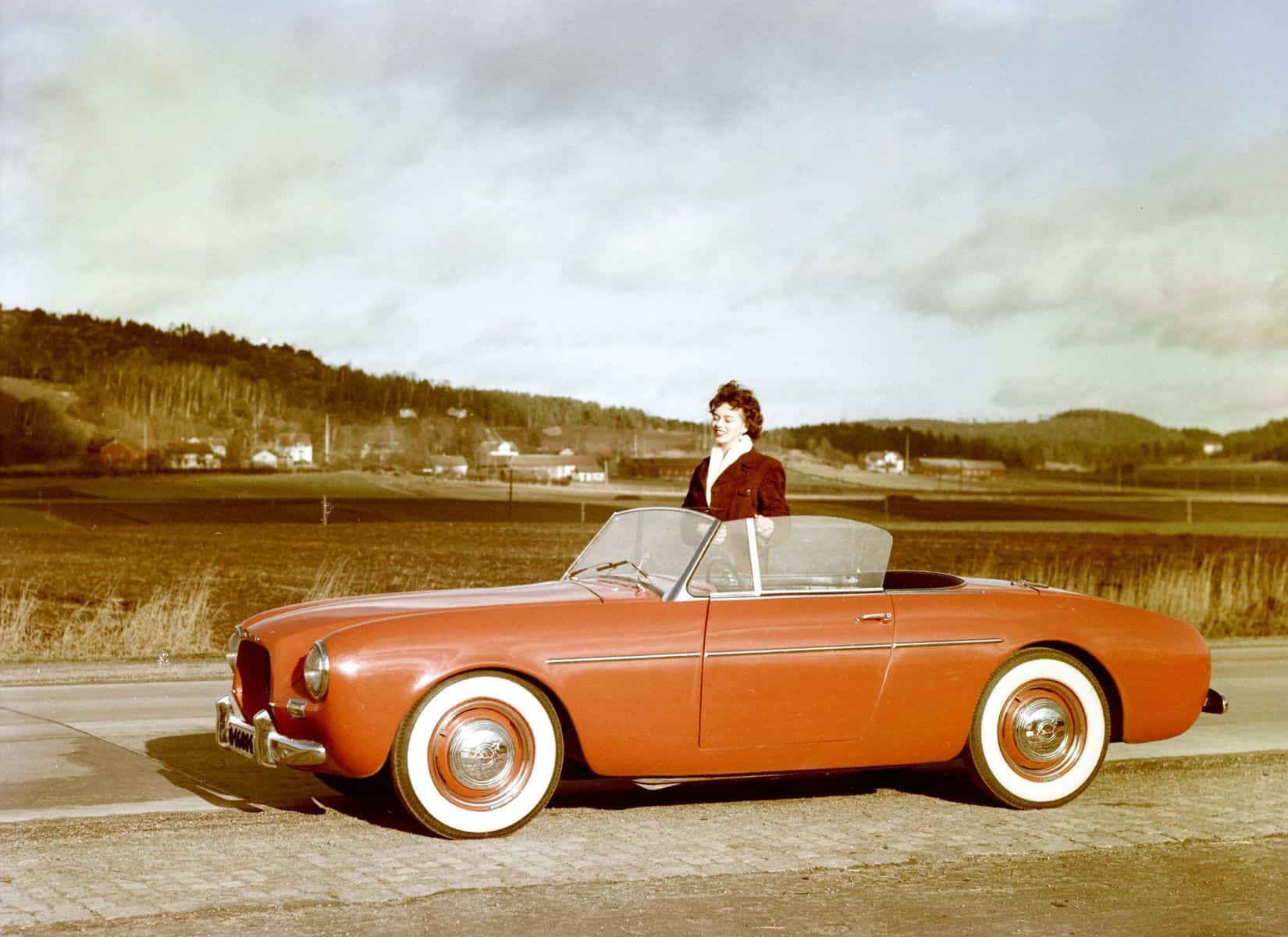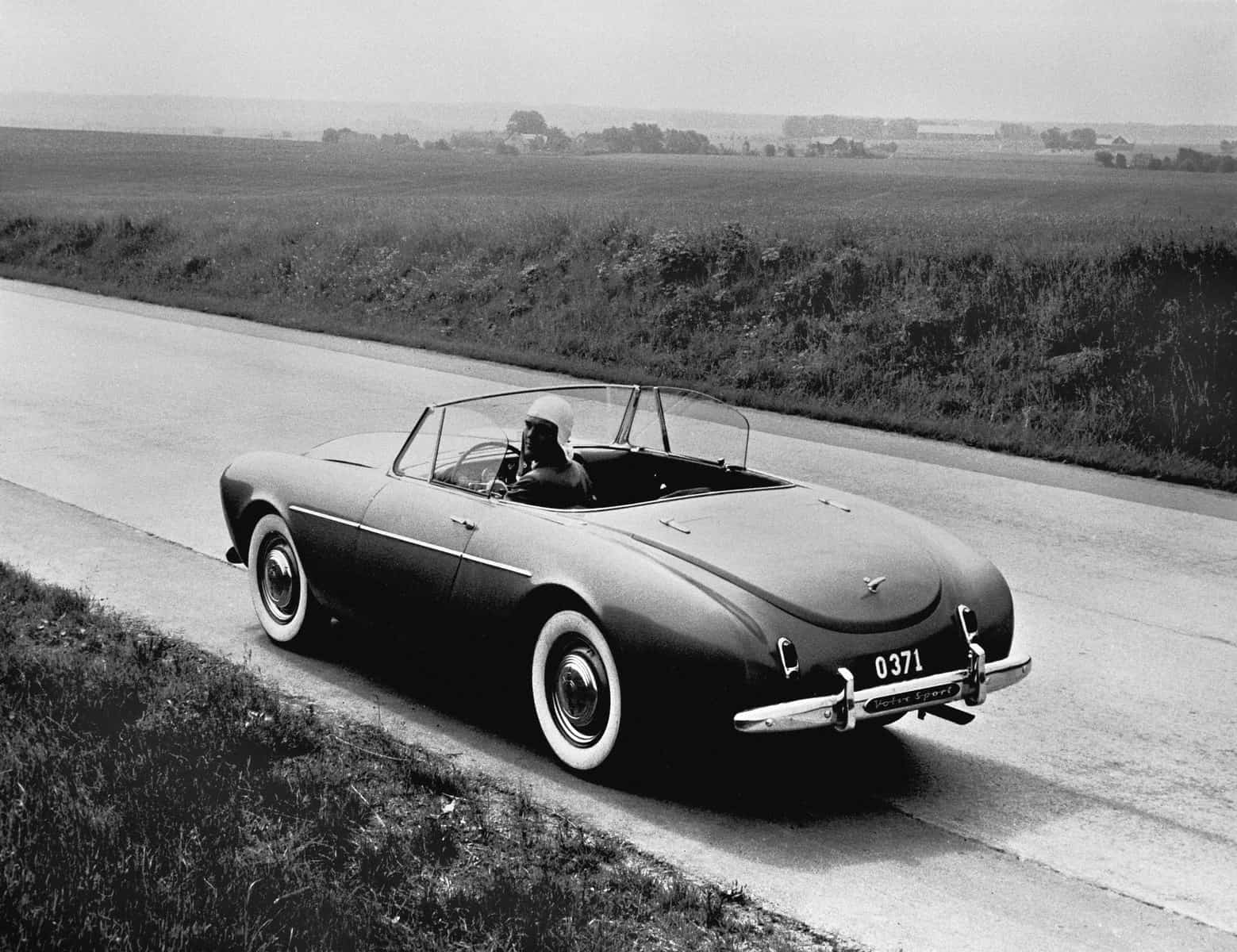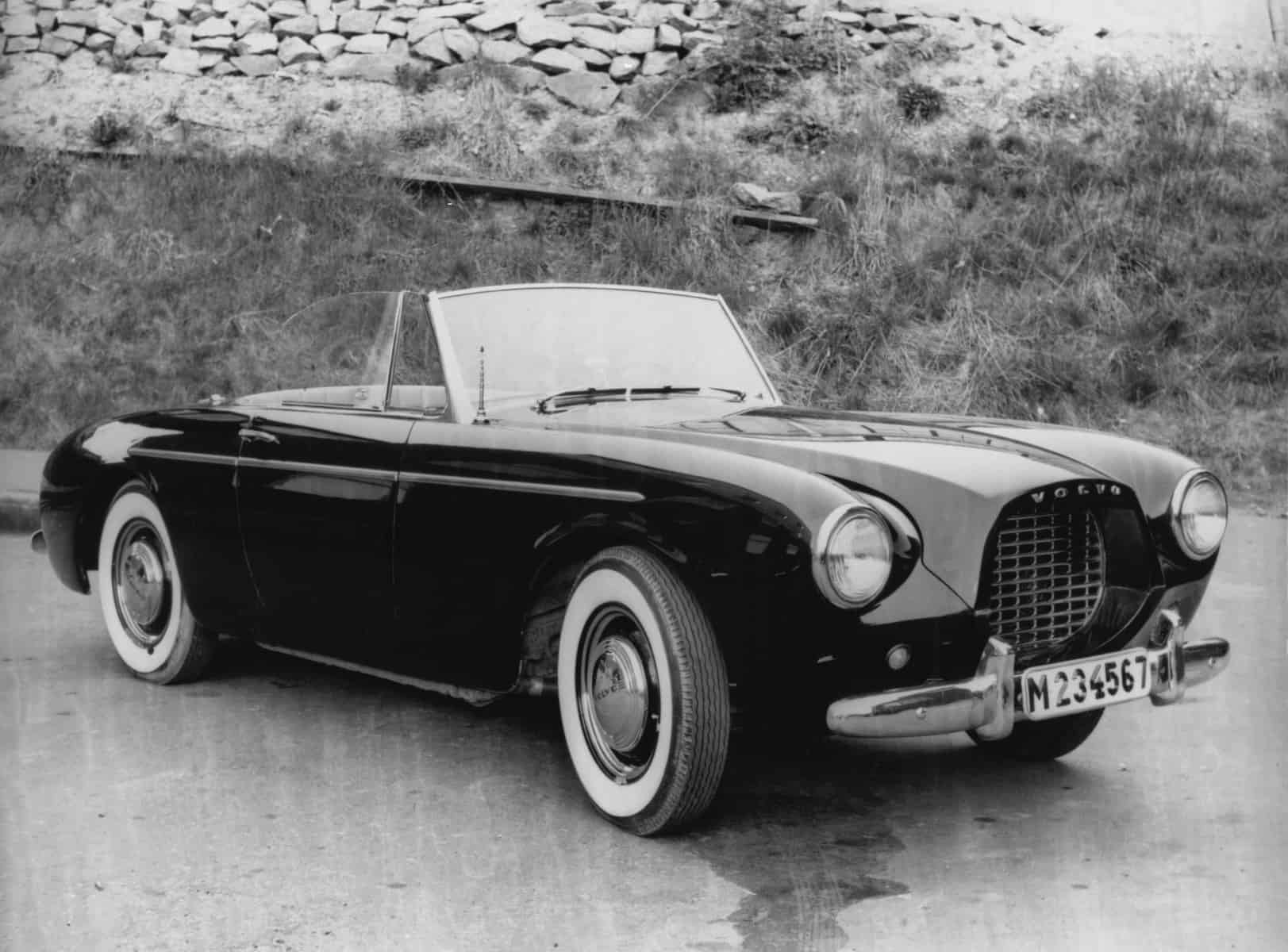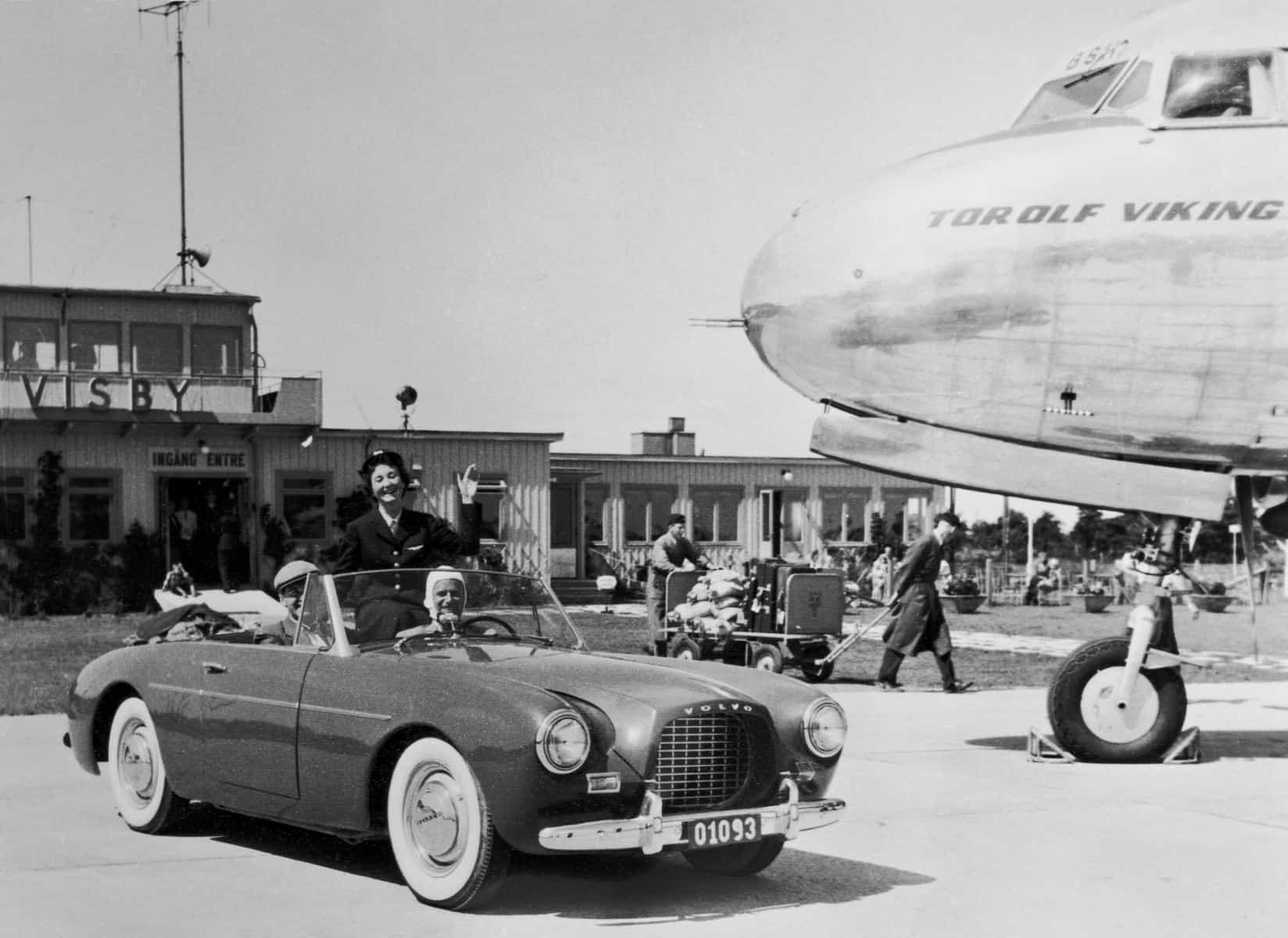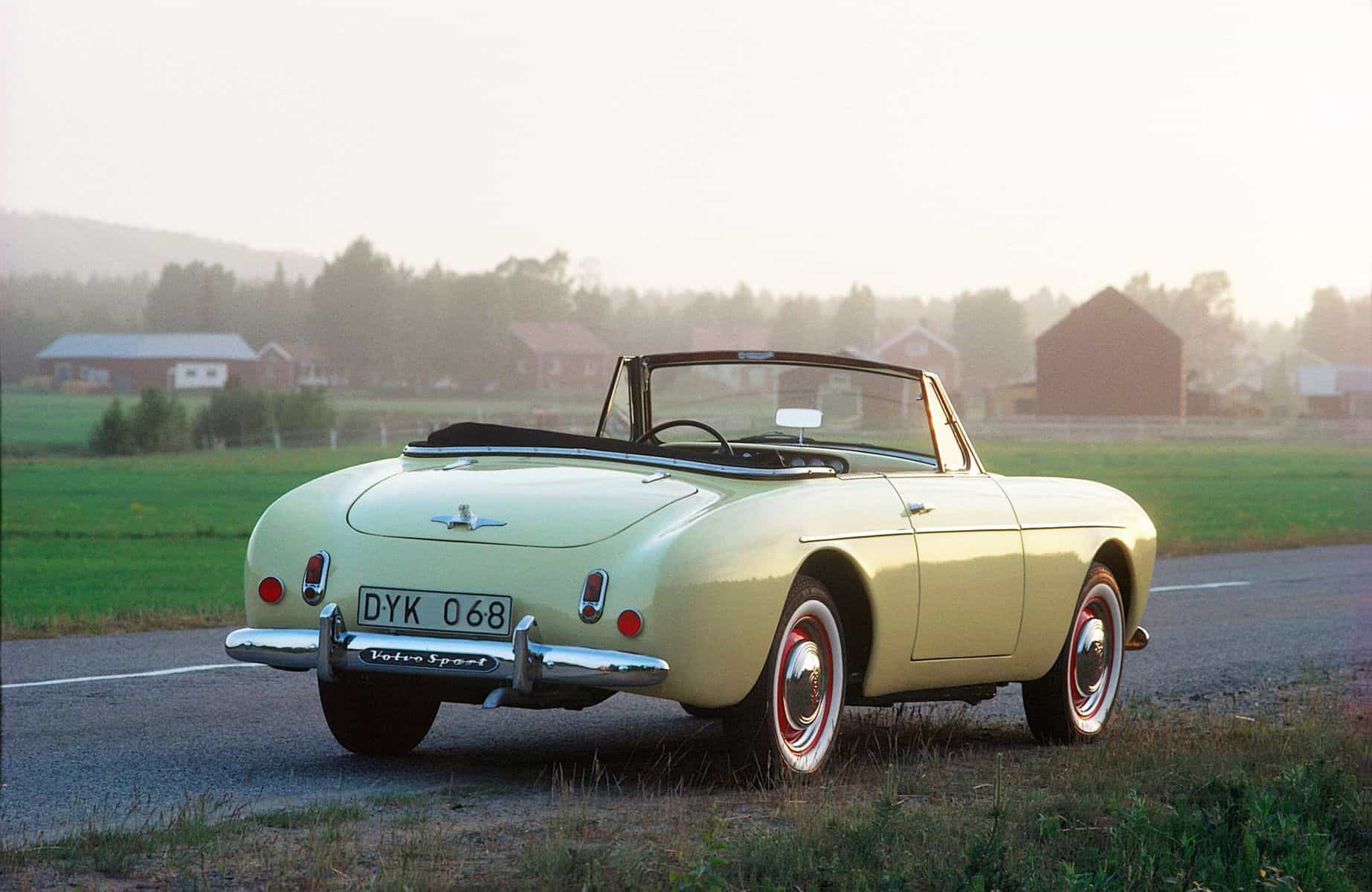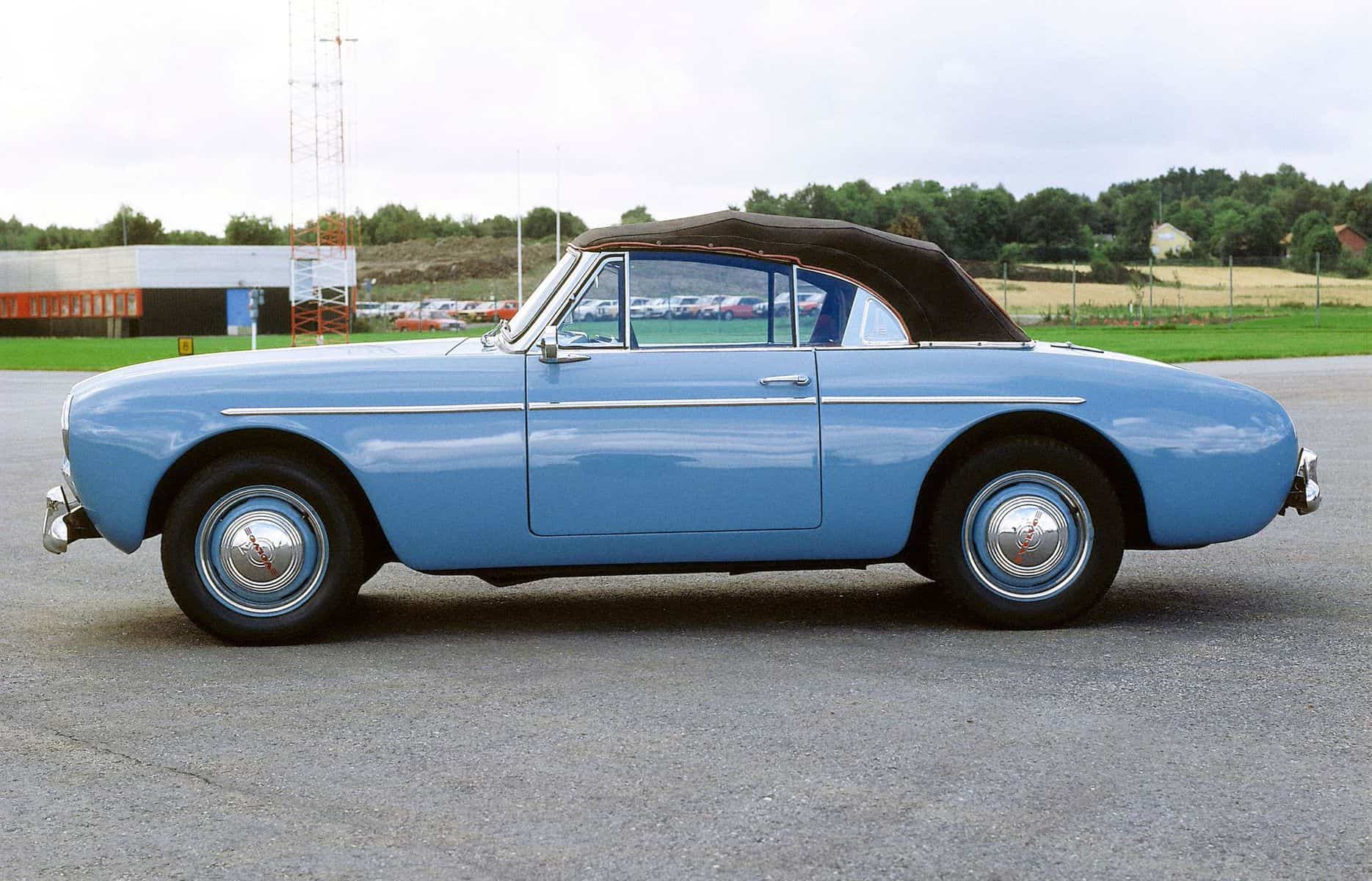Plastic Fantastic
Volvo’s Sport – a short-lived but valuable primer in the use and misuse of fiberglass
BY: KARL LUDVIGSEN
PHOTOS: AB VOLVO ARCHIVE; LUDVIGSEN PARTNERS
One of Volvo’s founders showed his sense of adventure by joining the sports-car passion of the mid-1950s. Although approaching retirement age at 62 in 1953, Volvo cofounder Assar Gabrielsson still had an eye for innovation.
Trained in economics and an experienced salesman, Gabrielsson was the yin to the yang of Gustav Larson, the engineer with whom he founded Volvo in 1924. Larson retired two years earlier but the tall Gabrielsson was still going strong as the dictatorial chief of Sweden’s leading car and truck maker. And in America he had an epiphany: Volvo would build a sports car.
An imaginative and gregarious man, Assar Gabrielsson enjoyed nothing more than the open exchange of new ideas. These he found in ample supply during an extended visit to the United States in 1953, where sports cars were in the news. Not only were MGs, Aston Martins, Jaguars, and Allards dashing around, but also America’s automakers were into sports cars. The Nash-Healey had already been in production for several years. Kaiser had announced its plans to build the two-seater Kaiser-Darrin and that summer of ’53 the first Corvettes were coming off a Chevrolet assembly line.
Gabrielsson had always respected the work of the American producers. If they were making sports cars, he reasoned that they had to be much more than a passing fad. Also interesting to the Volvo chief was the novel material the Kaiser-Darrin and Corvette were made of: glass-reinforced plastic, popularly known as fiberglass. From its wartime use in radomes and its postwar marine applications this light yet tough material had gained sudden fame as a promising material for auto bodies.
The inquisitive Swede went to Flint, Michigan, to see how Chevrolet was building its Corvette. He also paid a visit to a much smaller company that had been a pioneer in the practical use of fiberglass for car bodies. This was the Glasspar Company, in Montecito, California, which was then assembling bodies for the first prototype Kaiser-Darrins. Founded in 1950, Glasspar was headed by Bill Tritt. Among his capable team were Otto Baeyer, in charge of production, salesman Jerry Niger, and finance man Louis Solomon.
In 1951 Glasspar was asked to develop a sporty body for a Jeep-based chassis, which it did so successfully that in 1952 it started marketing replicas for sale. It gained global recognition on 25 February 1952 when that week’s issue of Life magazine featured its fiberglass bodies. Headlined “Plastic Bodies for Autos,” the article added that “Rustproof, dentproof plastic shells go on market in California” and devoted several pages to details of the Glasspar body-building process and the body’s easy repairability and high resistance to damage.
Sitting down with the Glasspar team, Assar Gabrielsson was impressed by the experienced Bill Tritt and Jerry Niger. Briefing the Volvo man on the catalytic role their designs and techniques played in the creation of the Corvette, they took full advantage of this surprise visit by Sweden’s most powerful automobile executive. Naturally enough Tritt and Niger started talking about a fiberglass sports-car design for Volvo.
This idea intrigued the Volvo managing director for more than one reason. He felt that a sports car could brighten the Volvo image, just as the Corvette seemed to be doing for Chevrolet. His popular and proven PV444 could provide the running gear. Gabrielsson already had an engine under development that would be just right for it. This was a special version of the PV444 sedan’s B4B four that was intended for rallying, dubbed the B14A.
The engine’s head was planed to raise its compression ratio from 6.5:1 to 7.8:1 to suit the better petrol in the export markets in which the car was to be sold. It produced a useful 70 horsepower at 6,000 rpm from 1,414 cc, fed by twin SU carburetors. A high-lift camshaft for the pushrod overhead-valve four was valuable.
Importantly as well, Gabrielsson wanted to explore the potential of fiberglass as a material for Volvo car and truck bodies. To implement this he wanted to produce a fiberglass-bodied vehicle in Sweden and test it under Swedish conditions. Only if Volvo were to commit that, he knew, would it be able to evaluate the potential of fiberglass.
While in California the executive worked out an agreement with Glasspar. The Montecito firm was to design a body for a Volvo sports car, prepare the tools for making the body, produce the first prototype body, and instruct a Volvo man in the proper way to design and manufacture fiberglass bodies. Nominated for that job was Åke Zachrisson, who went to California to become Volvo’s fiberglass expert.
Bill Tritt went quickly to work on a suitable body design while Gabrielsson was still in California. Soon he sketched a bold shape with rounded straight-through fenders and a deep-set circular air intake in a highly sculptured front end. While the body’s pontoon sides were unremarkable, its fish-mouth air intake was reminiscent of a design that Howard Darrin had created for the Panhard Junior chassis. Tritt’s Glasspar was a subcontractor to Darrin for his fiberglass body creations.
Pressing for a quick result to surf this new wave, Gabrielsson sent Tritt’s body designs to his engineers and asked them to get busy designing a chassis to suit. To guide them in the body technology he bought one of Glasspar’s standard fiberglass shells and had it air-shipped to Gothenburg so the engineers could see what sort of problems they would be facing. They started work using the internal code for the new car of PV-123, “PV” standing for “passenger vehicle.”
“We worked night and day for a month to get the chassis ready,” said Raymond Eknor, who was in charge of the project under chief engineer Tor Berthelius. He was assisted by Eric Quistgaard. They started with PV444 components — engine in B14A tune, three-speed transmission, Spicer-built rear axle and its front and rear coil-spring suspensions. Parallel-wishbone suspension was used at the front while the live rear axle was guided by radius arms and a Panhard rod. The drum brakes were the same as those used by Studebaker, with 123 square inches of lining area, more than enough for such a light car.
While the sports car’s track was like that of the PV444, 51.0 inches in front and 51.5 inches in the rear, the engineers reduced the wheelbase 20 centimeters to 240 cm, 94.5 inches. These were fractionally larger than the measurements of the Austin-Healey 100 while the Triumph TR-2 was significantly smaller.
Most of their effort was invested in the design of a completely new frame, for the PV444 sedan had an integral body with no separate frame. Thinking of something that could be made in small quantities with inexpensive tooling, Eknor and Quistgaard came up with a welded-steel tubular frame. Its side members, which came out to the body’s rockers in the manner of later perimeter frames, were composed of two 1.5-inch tubes, one above the other. They were joined together by sheet-steel webbing drilled for lightness in a construction reminiscent of the frame of the British BRM Grand Prix car.
The frame had six major crossmembers and a light-gauge X-member under the floor. It was gusseted at points of stress and where various parts were attached. The exhaust pipe was routed next to the right-hand frame rail with the silencer placed at the extreme rear, where a 15-gallon fuel tank was slung toward the left rear of the frame. The PV444’s wheels carried Trelleborg 5.90 x 15 tires. The first three frames were made in Volvo’s own workshops. Those for the production cars were subcontracted to a Swedish concern, AB Motala Werkstad, whose expertise dated from 1822.
The first such sports car was completed entirely by Glasspar and delivered to Volvo early in 1954. It had a Corvette-style wraparound windscreen, an integral hardtop, and chromed surrounds for its recessed grille opening. Not surprisingly it had some faults. By Volvo’s standards its body wasn’t suitable for production. So Eknor’s team got busy on three more prototypes with the changes that they thought necessary, using body shells shipped from California.
At the front they fitted small circular running lamps alongside the hinges that allowed the hood to swing up from the rear. Eliminating the chrome surround from the grille, they proudly lettered “Volvo” above it. A new windscreen was gently curved, flanked by fixed quarter-windows. Side windows were slotted in, not able to be slid down. The only weather protection was a removable hardtop, also fiberglass.
Volvo’s stylists including Jan Wilsgaard created the fascia and interior. Their instrument panel was a handsome driver-oriented lozenge with large speedometer and tachometer flanking the steering column. Lesser gauges were to the right, including oil temperature, with controls and a radio in the middle. The PV444 steering wheel with its horn ring struck a non-sporty note but was serviceable. A lockable compartment was built into the rear bulkhead. Neat carpeting and individual seats completed an attractive ensemble.
The three cars were complete but virtually untested when they were unveiled to the press on Wednesday, 2 June 1954, on the concrete apron of Gothenburg’s Torslanda Airport. Volvo executives and comely SAS flight attendants were on hand to show the car’s features to the press, including a complete unpainted fiberglass body straight from Glasspar.
This was big news. A Swedish sports car! Made of plastic! The aim, the press understood, was to lay down a series of three hundred to be sold in export markets. No spare tire? It wasn’t needed, the journalists were advised, because “puncture-proof” tires were fitted.
Export-aimed or not, the three Sports next went on a tour of all Sweden’s Volvo dealers in company with some new truck models. Meanwhile Raymond Eknor and Eric Quistgaard got busy with the final changes needed to produce a series of such cars. Their initial orders for components would suffice for several hundred cars.
Body panels continued to come from Glasspar, though as the program evolved some molds and panels were made by Volvo. New to this material as they were, the Volvo engineers struggled with the body’s structure. “The fiberglass was used too much like sheet metal,” Eknor recalled. “The door hinging was too weak, for example.”
They tested the prototypes at night at first for secrecy, trying to fix the faults, the rattles and shakes that erupted all too easily. One of the prototypes was hammered over a 260-mile loop of Sweden’s notoriously demanding gravel roads. The frame’s construction was strengthened and revised for easier manufacture with the drilled webs that joined the paired side tubes being moved to their outer surfaces.
Spare wheels were provided for the production models under a rear deck restyled to eliminate a raised curve that characterized the originals. Shaped rectangular running lamps were fitted in front. The final design had wind-down windows and a convertible top that retracted under a neat boot behind the seats, where a useful amount of storage space was available. In this form it had rear quarter-windows that could be lowered, albeit with difficulty.
An aspect of the Sport’s specification that wasn’t too appealing to the sporting driver was its three-speed transmission. While early cars had a long, bent-back gear lever, later ones had a small remote lever mounted on the centre tunnel. Two or three experimental five-speed transmissions were ordered from ZF in Germany and tested in the Sport but they were never offered in production.
In 1955 Volvo began beating the drum for its new model. Between 15 and 26 January one of the prototypes was on display at the Brussels Salon where it shared its debut with the wagon version of the PV444, the Duett. Enhancing its bling if not its authenticity were fake wire wheels complete with fake knock-off spinners. This must have been a fancy of the importer as none of the production cars were so equipped.
A thousand copies of an English-language brochure for the show explained that “Volvo wants to find out whether plastic is a suitable material for building bodies and wants to be in the forefront when it is a question of gaining experience with a new material such as plastic.”
This exposure was premature, for not until 1956 did production of the Volvo Sport begin. The first one hundred sets of parts were delivered for assembly in a small section of the Volvo plant set aside for that purpose. In its final form the Sport weighed 1,875 pounds at the curb — commendably light — and measured 166 inches in length.
The Sport made the auto-show rounds in 1956, starting again with Brussels in January. A red car with gray hardtop was shown in New York’s Coliseum from 28 April to 6 May. An Earls Court, London, appearance was scheduled in the autumn. To spur export sales, three of the first cars made were sent to Argentina and Venezuela, while others went to Portugal, Morocco, and Belgium. Contradicting the intent declared at the launch, most of the forty-four cars produced in 1956 were sold in Sweden, closer to home where their inevitable faults could be dealt with more easily.
One of the cars, thought to be No. 25, was given an intensive test by Pelle Nyström and Helmer Petterson, the engineer who had created the evergreen PV444. In March of 1956 they set out on a trip through Europe to North Africa that covered ten thousand miles. “Petterson reported back that the frame was weak,” wrote Björn-Eric Lindh, “and that the body mountings were chafing away, also that the door mountings were poor and that the car in general was not of Volvo quality.”
“It was too flimsy and bounced around too much,” recalled the engineer.
However, one episode pointed to some potential for the new body material. When a child ran out into the road in Italy, the Sport’s driver swerved and smote a pillar. Instead of producing nasty dents, the collision resulted in minor damage that an Italian shop repaired easily and quickly. One of the vaunted features of fiberglass paid off in the real world for Petterson and Nyström.
With production continuing in the first quarter of 1957, nineteen Sports were made in March, suggesting an annual rate of better than two hundred cars. Slowly but surely, it seemed to be finding a market with virtually all the production now going to America. An important “sale” was the allocation of chassis No. 49 on 2 April to Gunnar Engellau. With the car’s number matching his age, trained engineer Engellau had been running Volvo’s aero-engine joint venture with Saab for thirteen years before being tapped to take over the vehicle company on Gabrielsson’s retirement.
Engellau was unimpressed by the Sport. “I drove it one weekend for 450 miles,” he told author Gladys Nicol, “and I thought the doors would fall off, and it was noisy and I didn’t like the wheels, and in any case we were losing huge sums on each car we made.” In one of his first management decisions, he said, “That car was one of the first things I destroyed. I killed that car!” Engellau directed that it be phased out as soon as possible. The last Sport left Gothenburg on 21 May, California-bound.
That concluded the Volvo Sport story, with sixty-seven production cars built in addition to the three prototypes and Glasspar’s concept car. “It was a failure, more or less,” reflected engineer Raymond Eknor, “and it was intended to be.” The Sport had been an experiment in fiberglass. By definition, not every experiment can succeed.
It had the fallout that Assar Gabrielsson had sought, however. “We learned a lot from it,” explained designer Jan Wilsgaard. “We started to use fiberglass in our shops a lot.” It was used in styling and also as an aid in the press shops for molds, fixtures, and jigs. And the Sport did draw favorable press attention to Volvo. In America, particularly, it was a lightning rod that encouraged Volvo’s dealers and importers — especially those on the West Coast — to express a strong sentiment for a real volume-produced sports Volvo.
Gunnar Engellau would soon show that he killed the Volvo Sport because it was a poor Volvo, not because he was against sports cars. Like Gabrielsson he felt that a sporting two-seater could help Volvo’s image and sales in the US market, on which he was concentrating his export efforts. He would encourage the creation of such a car, of which the pioneering Sport was undeniably the godfather.

